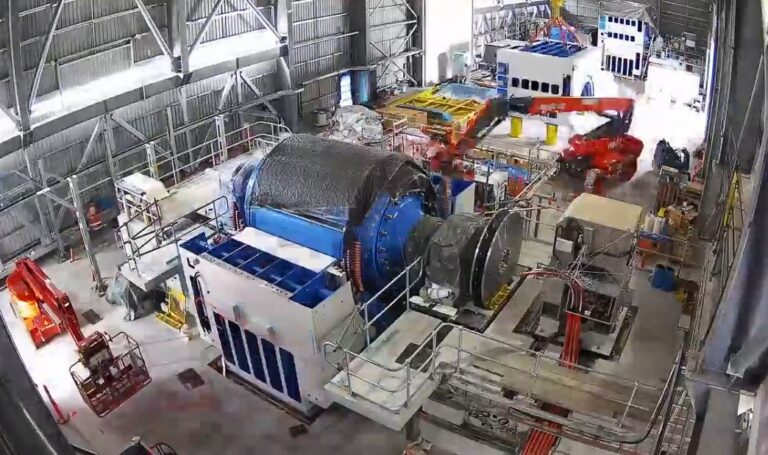Transgrid – the owner of the electricity grid in New South Wales, Australia – plans to roll out up to 14 synchronous condensers and 4.8 GW of batteries with grid-forming capabilities to stabilize the electricity grid as coal-fired power stations retire and more renewables emerge online.
Transgrid, which operates the electricity transmission system in New South Wales, has said the growth of inverter-based sources and the departure of the state’s coal generators are driving an urgent need to add new sources of system power to the energy system.
“Our energy system is undergoing a rapid transition,” said Transgrid Executive General Manager of Network Marie Jordan. “While coal is being retired and more renewable energy sources we are faced with unprecedented challenges to maintain the security and reliability of an increasingly complex system.”
Jordan said the future energy system should be capable of producing up to 100% instantaneous renewable energy in the next decade, with the Australian Energy Market Operator estimating that 14 GW of coal energy The generation capacity in the national electricity market will be closed in 2030.
To replace the system’s power coming from those leaving coal assets and unlocking additional renewable generation, Jordan said large-scale investments are needed across a wide range of options to keep the system strong.
“Currently, our energy system depends on the system power produced by large spinning machines such as coal, gas and hydropower generators, which provide a strong pulse to keep the electrical grid stable so it can survive disruptions,” she said. “Renewables such as wind and solar do not have the same capabilities and must follow a strong signal from the grid or they will become disconnected. That is why we urgently need new sources of system power.”
Transgrid has now released a new report outlining its options for providing system power to the energy system in New South Wales.
The Draft project assessment report (PADR) identifies a portfolio of non-network and network solutions, considering the first and currently most credible option synchronous capacitors to come online by 2028-29 and six more are needed by 2032-33.
It also calls for 4.8 GW of battery energy storage systems lattice-forming abilityand modifications to a number of synchronous hydro generators and to the planned compressed air energy storage facility at Broken Hill, which will require interfacing, to ensure they can be switched on or operated in synchronous condenser mode where necessary to fill gaps in system strength .
The network operator, which estimates its preferred option will cost almost AUD 1.8 billion ($1.2 billion) in capital and operating costs, said the size and complex nature of system strength requirements in New South Wales means multiple solutions are needed to ensure system stability.
“There are so many moving pieces in our energy puzzle and no single solution can meet the need,” Jordan said. “In fact, dozens of solutions have been distributed [New South Wales] will be required at all times to keep the system operating safely.”
Transgrid is the first transmission provider in Australia to launch a comprehensive program to ensure system strength. New regulations means that from the end of 2025 it will be its responsibility to ensure that sufficient system strength is available to maintain the stability of the energy system in New South Wales.
Transgrid said it will now hold a six-week consultation period with industry to provide feedback on the methodology and results of the PADR. Entries must be submitted by August 2, 2024.
This content is copyrighted and may not be reused. If you would like to collaborate with us and reuse some of our content, please contact: editors@pv-magazine.com.


